In August 2002, a joint initiative of the Bundeswehr and the German defence industry succeeded in setting the stage for the development of a new infantry fighting vehicle. The first procurement decision of the country’s new Minister of Defence related to the Neuer Schützenpanzer, or “New Infantry Fighting Vehicle”. With his approval, the Budget Committee cleared the way for development of the new system on September 12th 2002.
Known successively as the MMWS Panther, Neuer Schützenpanzer, Igel (“hedgehog”), and ultimately as the Puma, the problems involved in developing this new weapons system have at times seemed as multifarious as the nomenclature chosen for it. Among these have been the hard to fulfil weight limits and the alleged lack of innovative capacity on the part of the German defence industry.
A year after the launch of work to develop the new infantry fighting vehicle for the German Army, “DDP” pursued this topic in an interview of Lieutenant General Manfred Dietrich, the Deputy Inspector of the German Army, which focused on the status of the project to develop the new infantry fighting vehicle, as well as examining the Germany Army’s path to the future.
General Dietrich, what does a trained and experienced armoured infantry officer have to say about the current status of the new infantry fighting vehicle? How do things stand today with Project Puma?
The project to develop the Puma infantry fighting vehicle is set to be one of the German Army’s most important projects for the next few years. We are very grateful to Dr. Struck, the Federal Minister of Defence, for backing this programme. It’s progressing well. But I should start by saying that this is a very ambitious project and completing it is going to be a long and laborious process. But it’s definitely worth the effort, because our armoured infantry, who are deployed all over the world, deserve this system.
The project to develop the Puma has already made it over the first political hurdle, and a contract to design the new vehicle has been awarded. In a joint effort by the company Projekt System & Management (PSM), the procurement authorities and the military, an integrated working group has now mapped out a course that will turn into reality what is likely be the most important project of the German Army for years to come. As far as I’m concerned, the highly focused and extremely cooperative approach adopted by the integrated working group ought to serve as an example of how to run future projects.
The decision to develop and procure the Puma sends a clear message of the German Army’s commitment to remain a viable fighting force in future, and will go a long way to ensuring that we’ll be able to complete successfully the missions we’re likely to be assigned in future, not least those outlined in the Defence Policy Guidelines established by the Minister of Defence in May. This is because the Puma will provide our soldiers when they’re in harm’s way with the best vehicle imaginable, one that can be adapted to perform any conceivable mission in the stated requirements spectrum, and whose mix of firepower and modular armour will make it superior to all comparable vehicles, including those that have already been fielded and those that are still on the drawing board.
Could you point out some of the basic capabilities that will characterise this future weapons system?
The idea behind the Puma weapons system is to provide the troops on the ground with an infantry fighting vehicle that’s faster when it comes to reconnaissance and detecting threats; that can shoot first and hit its target; and which above all else provides the crew with a level of protection never before achieved in an infantry fighting vehicle – and that goes for the threat from landmines, too.
We were aware from the outset that these requirements were extremely demanding, and that this leap into the future wouldn’t be easy. But what’s already been achieved after just one year really deserves to be described as a success story – certainly on balance. Let me put it like this: if we already knew at the beginning of the development phase what would come out at the end, we could skip the development part of the project altogether.
The 32-ton weight limit has to do with the fact that we’ll want to be able to transport the Puma in the future German A400M transport aircraft. Limiting the basic version to just 32 tons, coupled with a whole raft of system requirements with regard to availability, mobility, armament and sensors, meant that we necessarily had to enter uncharted territory during the development phase. For example, the originally intended triple-layer armour had to be modified in order to assure the greatest possible degree of crew protection while still maintaining full airportability. In its current basic configuration, we’ll be able to deploy the Puma without any limitations; it will also be fully airportable in the A400M. Moreover, it offers a degree of crew protection that no other infantry fighting vehicle in the world in its weight class can offer today.
When equipped with modular armour add-ons that provide a second layer of protection, the Puma will meet the stringent armour criteria now specified by the German Army as the best form of crew protection. Moreover, once the vehicles have arrived in theatre, they can be very quickly fitted with additional armour add-ons. That’s certainly quite an achievement! And in keeping with its forward-looking, modular design, it will of course be possible to retrofit the Puma with future alternative armour technologies, ensuring that this weapons system remains on the cutting edge of technology for years to come.
Complex future missions require complex solutions. The Puma weapons system is designed for the future. Does the German Army know what will be expected of it in future, and what it wants itself?
I’ve already touched on the Defence Policy Guidelines paper. It spells out the missions and requirements for the German armed forces both today and tomorrow in no uncertain terms, and also shows where the emphasis is being placed when it comes to materiel and equipment planning. The altered security situation in the world and the day-to-day operational realities the German Army now finds itself faced with are the twin parameters that dictate the core capabilities we need.
One thing here is very clear: the Army will continue to be our operational mainstay. Budgetary constraints mean that we have to set priorities. But when it comes to core capabilities – and especially the security and safety of our men and women in uniform, as well as firepower, tactical effectiveness and capacity for leadership – we can’t afford to cut corners. This is borne out by the experience of our British and American friends during the invasion of Iraq, which was recently made very plain to me at the 29th German-American General Staff Conference in the US, where this was presented in great detail.
But our own experiences in Somalia in 1994 and during present-day operations in the Balkans, Kuwait and Afghanistan, have also led us to introduce changes in our structures and equipment. Today we know exactly what’s needed in order to be able send our young men and women into harm’s way with a clean conscience, secure in the knowledge that we’ve done everything we can to help them to complete their missions successfully and in as safe an environment as possible – from peacekeeping and humanitarian missions right through to major combat operations.
Thanks to the capabilities and requirements specified in the new Defence Policy Guidelines, we in the German Army now have a clear vision of what’s expected us, which in turn has enabled us to formulate a far-reaching and systematic approach with regard to our future mission spectrum and equipment needs. Because only a well-equipped, well-balanced, highly mobile and highly flexible army will be able to complete its missions successfully. Thus, with respect to protection, equipment, training and lethality, every single soldier must enjoy superiority in every situation if we are to fulfil the clearly formulated requirement in the Defence Policy Guidelines for a modern, well-led, well-trained, well-protected, well-equipped force that is highly mobile, resilient and hard hitting, and thus capable of contributing to international security operations. The new Puma infantry fighting vehicle represents an important component in the equipment mix to be fielded by the German Army of the future.
For the German Army, the future will also mean having to train conscripts in the use of highly complex weapons systems. Can a conscript with just nine months to train and exercise in really be expected to learn to use Puma, or will the new system be reserved for long-service professionals?
Technical developments are always aimed at bringing about improvements. But with the Puma this doesn’t just mean more protection, greater mobility, improved effectiveness and a leap into digitisation. When I was a company commander in 1971, I remember picking up the first Marder infantry fighting vehicle at the station in Munster, fresh from the factory. The armoured infantry were justifiably proud of having what was then the most advanced weapons system of its kind. Of course, the gun layer still had to calculate (pretty roughly) the distance to the target and then fire, and it was hardly possible to shoot and score a hit on the move. The gun layer had to lead moving targets, and the night vision device was a white light and infrared target spotlight that was frankly very difficult to operate.
Today, thanks to advanced technology, the gun layer can identify targets day and night, while a laser measures the distance to the target, and the fire control unit keeps the gun trained on the target even when the vehicle is on the move, assuring a first shot kill. Back in 1971, we used conscripts as gun layers, and it was four months before they could hit a target on the firing range. Today, state-of-the-art technology makes operating highly complex systems like the Puma much easier, thanks in part to simulator-supported training. After all, a generation of conscripts who’ve grown up with data processing systems will have no trouble in operating the Puma.
As far as I’m concerned, the fielding of advanced systems like the Puma and the maintenance of conscription by no means rule each other out – quite the contrary: training the entire crew has become so much simpler that we can spend much more time on tactical training that encompasses the entire mission spectrum. Camera-supported situation imagery and digitised weapon guidance systems make the tasks of the commander, the gun layer and the riflemen on board far easier. For the first time, the men in the fighting compartment will have access to the same information as the commander and gun layer. And for the first time, mechanised infantrymen will be able to dismount from a combat vehicle and execute their mission with a clear picture of what’s going on outside – whether it’s a fire fight or riot control or the distribution of humanitarian aid.
Even if the mission spectrum of our armed forces has become far more diverse and each branch has to be able to cover the full range of military tasks, conscripts will still have an important role to play in future. And especially those troops who volunteer to serve for a longer period – half of who are recruited from the conscript force and who in any case constitute some 20 percent of our forces deployed in foreign trouble spots – will be quick to master the Puma weapons system. What’s more, having advanced technology like this will motivate applicants to enlist for longer, because they’ll feel they can trust a state-of-the-art weapons system that offers the latest in armour technology, tactical effectiveness and combat superiority. The soldier has to have a good feeling in his gut, and the certainty that he’ll come out on top of any engagement. And that means being protected from enemy fire as well as the ability to subdue any potential opponent.
Significant successes have been scored in developing the Puma; thus, at roughly the same time, the Germany Army will be taking delivery of two new combat vehicles in the 30-ton class: the Puma, which is a tracked vehicle, and the Boxer armoured transport vehicle, which is wheeled. Both of them seem to be designed to perform practically the same missions. Couldn’t you make do without one of them?
Actually, the Puma and the Boxer are intended for entirely different missions and branches of the military. The Boxer, i.e. the armoured truck, will serve first and foremost as a protected, high-quality means of transport. It will provide excellent protection and, in the sense of being a “system of systems”, it can be modified to perform an extremely wide variety of roles; it can serve as a fighting platform, for example, or for evacuating wounded personnel, or for transporting troops and materiel.
Conversely, the Puma is primarily conceived of as a medium-weight fighting vehicle, though modular armour add-ons can turn it into a system suitable for heavier formations, making it a replacement for the ageing Marder infantry fighting vehicle, which has reached the end of its development potential.
Furthermore, future operations will be characterised by a flexible mix of highly diverse transport and combat vehicles: the age of great tank battles is over. This means that all operations will involve a combination of forces and fires from every category of the armed forces. Light-, medium-, and heavyweight equipment will form a mix which will enable all threats in the area of operations to be effectively countered. By procuring both the Boxer and the Puma, we’re responding to this requirement. It’s the only way we can adequately protect our troops from the effects of landmines and hostile fire – and provide them with that protection as quickly possible. We owe our soldiers nothing less.
* Lieutenant General Manfred Dietrich, born in 1944 in Schleswig-Holstein, was himself an armoured infantry officer, commanding units at all echelons up to division level. From 1998 to 2001 he headed the German Army Office, and since March 2001 has been Deputy Inspector of the Army.




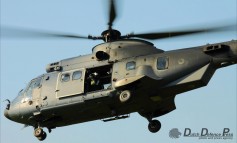
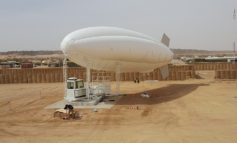
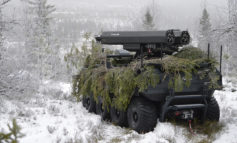
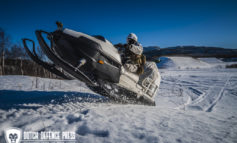
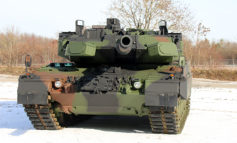



Leave a Reply